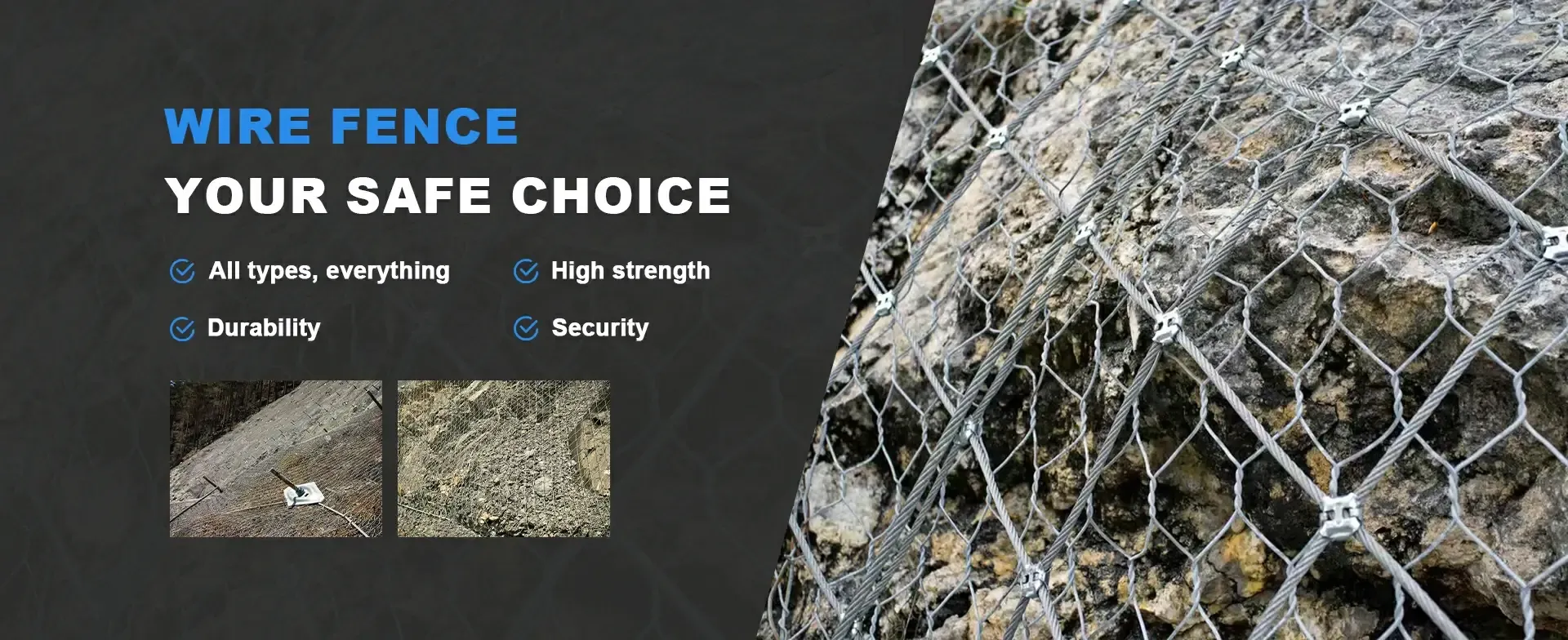pro . 20, 2024 14:11 Back to list
china gabion cage
The Versatility and Utility of China Gabion Cages
Gabion cages, traditionally made from hexagonal wire mesh, have emerged as a popular choice in modern engineering and landscaping practices, particularly in China. These structures, filled with natural stones or other suitable materials, offer a plethora of advantages that make them ideal for a variety of applications such as erosion control, retaining walls, and decorative landscaping. With the rapid urbanization and industrialization in China, gabion cages have become increasingly relevant, providing innovative solutions to both practical problems and aesthetic concerns.
What are Gabion Cages?
A gabion cage is essentially a wire container typically filled with rocks or other materials that provide stability and support. The term “gabion” comes from the Italian word “gabbione,” meaning “big cage.” Gabion cages come in different shapes and sizes, which can be customized depending on the specific requirements of a project. The wire mesh is usually made from galvanized steel or coated materials to ensure durability and resist corrosion, making it an excellent choice for long-term applications.
Applications of Gabion Cages in China
1. Erosion Control One of the most critical applications of gabion cages is erosion control. With China’s extensive river systems and mountainous terrains, erosion caused by water runoff poses significant challenges. Gabion cages can be strategically placed along riverbanks and slopes to absorb the energy of flowing water, preventing soil displacement and providing a stable surface.
2. Retaining Walls In urban areas where land is at a premium, gabion cages serve as effective retaining walls. Their robust structure can hold back soil and provide stability to hilly terrains, facilitating the development of infrastructure. They adapt well to various environmental conditions and can be designed to blend aesthetically with the landscape.
3. Flood Control With the increasing frequency of flooding due to climate change, gabion structures offer a reliable solution for flood management. They can be used to create levees or overflow channels, helping to control water flow and protect urban areas from inundation.
4. Noise Barriers In densely populated cities, noise pollution is a growing concern. Gabion cages can be utilized as noise barriers along highways and railways. When filled with heavier materials, they effectively absorb sound, contributing to a quieter and more pleasant urban environment.
china gabion cage

5. Aesthetic Landscaping Beyond their functional applications, gabion cages also find a place in decorative landscaping. They can be used in gardens, parks, and public spaces to create visually appealing structures such as benches, planters, and walls. The natural stones within the cages offer a rustic charm, enhancing the beauty of outdoor environments.
Advantages of Gabion Cages
One of the significant advantages of gabion cages is their sustainability. They utilize natural materials, promoting an eco-friendly approach to construction and landscaping. Additionally, their permeability allows water to flow through, minimizing hydrostatic pressure and encouraging vegetation growth on and around them.
Cost-effectiveness is another hallmark of gabion cages. Compared to traditional building materials, they often prove to be a more budget-friendly option, especially when local stone can be used for filling. Furthermore, their ease of installation reduces labor costs and time, making them an attractive choice for contractors.
Challenges and Considerations
Despite their many benefits, there are some challenges associated with gabion cages. For instance, proper design and installation are crucial to ensure that they perform effectively under various conditions. Additionally, regular maintenance may be required to replace damaged mesh or lost fill materials.
Moreover, in areas where environmental aesthetics are a priority, careful consideration must be given to the selection of filling materials to ensure that they align with the desired appearance of the landscape.
Conclusion
In conclusion, gabion cages represent a versatile and effective solution for numerous engineering and landscaping challenges in China. Their applications range from practical erosion control to aesthetic enhancements, making them an essential consideration for architects, engineers, and environmental planners. As urbanization continues to shape the landscape of modern China, the strategic use of gabion cages can offer sustainable and innovative solutions to create resilient and beautiful environments.
-
HESCO Gabion Baskets for Coastal Erosion Prevention
NewsAug.22,2025
-
Longevity and Durability of River Rock Gabion Walls
NewsAug.22,2025
-
How to Integrate Gabion 3D Walls in Urban Planning
NewsAug.22,2025
-
Reno Mattress Gabion Applications in Civil Engineering
NewsAug.22,2025
-
How to Install Wire Mesh for Gabion Baskets Properly
NewsAug.22,2025
-
Best Materials for Filling a Chain Link Gabion
NewsAug.22,2025
-
Wire Mesh Thickness Impact on Gabion Wall Load Bearing
NewsAug.12,2025






